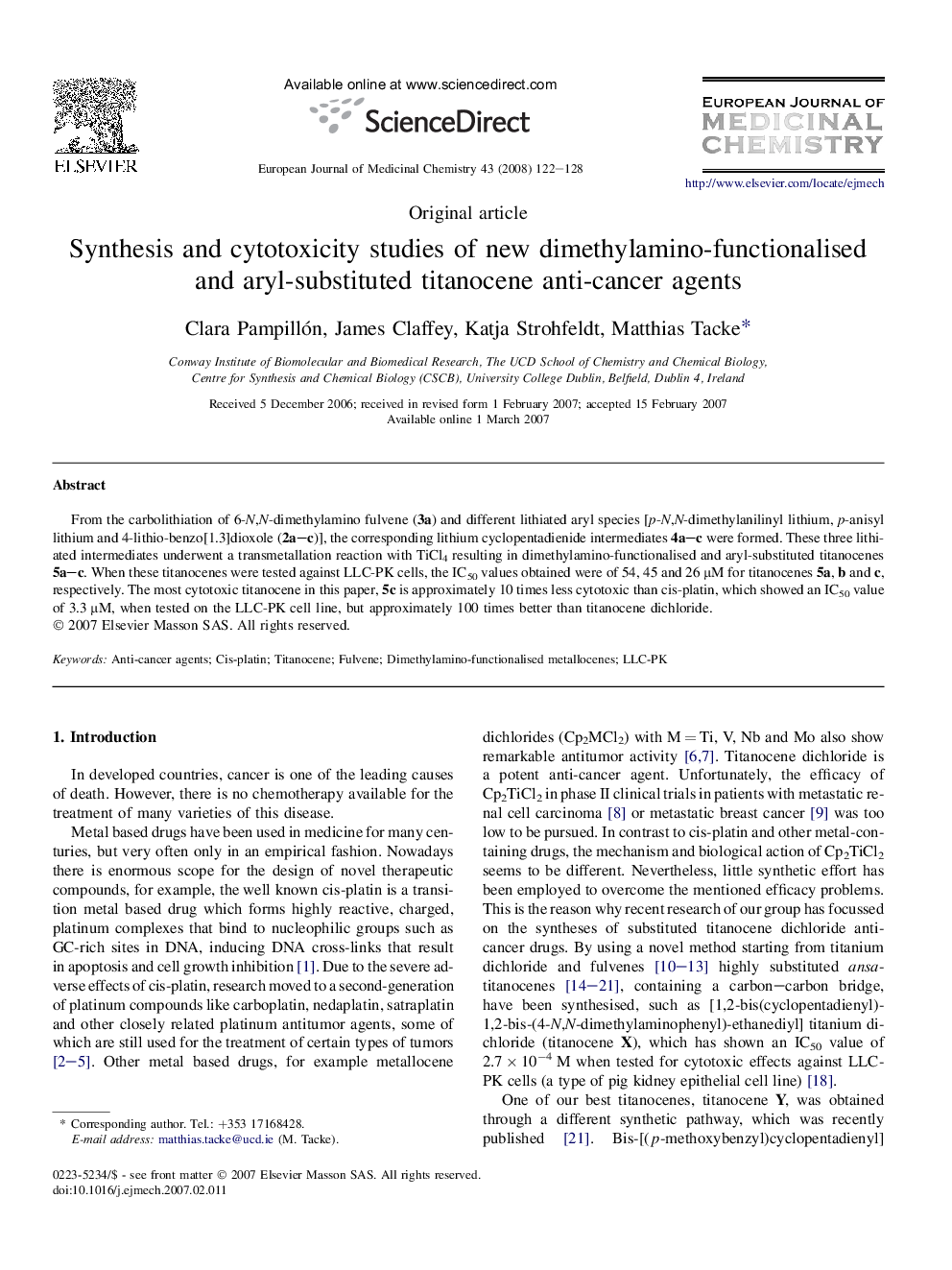| کد مقاله | کد نشریه | سال انتشار | مقاله انگلیسی | نسخه تمام متن |
|---|---|---|---|---|
| 1399875 | 1501217 | 2008 | 7 صفحه PDF | دانلود رایگان |

From the carbolithiation of 6-N,N-dimethylamino fulvene (3a) and different lithiated aryl species [p-N,N-dimethylanilinyl lithium, p-anisyl lithium and 4-lithio-benzo[1.3]dioxole (2a–c)], the corresponding lithium cyclopentadienide intermediates 4a–c were formed. These three lithiated intermediates underwent a transmetallation reaction with TiCl4 resulting in dimethylamino-functionalised and aryl-substituted titanocenes 5a–c. When these titanocenes were tested against LLC-PK cells, the IC50 values obtained were of 54, 45 and 26 μM for titanocenes 5a, b and c, respectively. The most cytotoxic titanocene in this paper, 5c is approximately 10 times less cytotoxic than cis-platin, which showed an IC50 value of 3.3 μM, when tested on the LLC-PK cell line, but approximately 100 times better than titanocene dichloride.
Bis-(p-anisyl-N,N-dimethylaminomethylcyclopentadienyl) titanium (IV) dichloride is an analogue of titanocene Y (bis-[(p-methoxybenzyl)cyclopentadienyl] titanium (IV) dichloride), one of the most cytotoxic titanocenes synthesised so far. It was synthesised starting from p-anisyl lithium and 6-N,N-dimethylamino fulvene.Herein, we present the synthesis and DFT structure of the titanocene and two further dimethylamino-functionalised and aryl-substituted derivatives followed by MTT-based cytotoxicity tests on LLC-PK cells.Figure optionsDownload as PowerPoint slide
Journal: European Journal of Medicinal Chemistry - Volume 43, Issue 1, January 2008, Pages 122–128